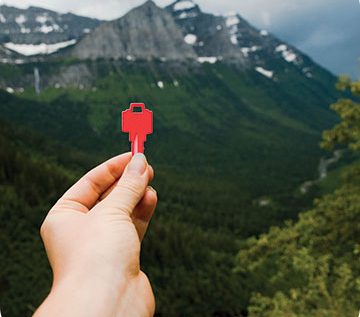As more and more business communications are being sent via SMS the carriers are recognizing that traffic is getting more and more congested with spam and other unreliable text messages, so in an effort to keep upstanding messages flowing they’re requiring registration for all A2P (application to person) messages being sent via 10-digit long codes.
The registration form takes no more than 10 mins, but as of February 2023, the approval process can take anywhere from 2 hours to 2 weeks, depending on your company reputation, company SMS use and quantity and really anything else the mobile operators want to check out. So don’t wait until the last minute if you have an important SMS to send out soon!
Yes, as of March 31, 2023, most DCAs (direct connect aggregators) will not be supporting any messages sent on unregistered long codes. The messages will likely be blocked, but we haven’t heard of any fines for this…but don’t hold your breath, these things change in the blink of an eye right now.
Fees paid to The Campaign Registry:
- One time brand fee: $4 per brand
- Monthly campaign fees: $.75-10 per campaign
- Vetting fee – if requested: $40 (optional)
To Carriers:
One time campaign fee to T-mobile: $50 per campaign Discontinued as of Sept 1, 2022- Carrier surcharges: $.002-.004 per message
- Mandatory manual vetting fee: $15 per campaign
Fines can range anywhere from SMS blockage and throttling to $10,000 per SMS. If we haven’t mentioned 1000 times before, these fines are serious, and extreme, it’s much cheaper to register your use-cases than to cross your fingers.
TCR is a/the unbiased reputation authority for business messaging on 10DLC…says so right on their website. The U.S. carriers (well, AT&T, Verizon and T-Mobile, at least) came together and agreed that The Campaign Registry would be the reputation authority company that they would all work with.
TCR collects information on the company and messages that are being sent, they then vet this information to help the carriers determine how they will handle your messages. The vetting process is based on several things, with legitimacy of business being one of the most influential…does the EIN exist, does it match the company name, etc. Once TCR determines the reputation, this information is shared with the carriers by brand and campaign IDs. Each carrier uses the information for throughput and speed of sending their messages.
It’s the quantity and speed in which a carrier allows your SMS to deliver to the intended recipient. The different carriers have different variables, some are quantity per day, quantity per number, quantity per minute, etc.
In short: No
In long: There are other types of numbers that can be used for sending A2P SMS, but they all require some sort of registration.
- Short codes: Short codes are 5-6 digit numbers, they are typically used for companies that send thousands of messages monthly. When applying for a short code, your company and the types of messages that will be sent will be vetted much like 10dlc, but it can take 2-3 months to get the results, and each number is exorbitantly more expensive than 10dlc.
- Toll-free numbers: These are the fastest to be acquired, they are free, but they are not as reliable as short codes or 10dlc when it comes to throughput and blockage and you can’t get a local area code. They have to be registered, but currently this registration is just with the SMS providers, but we predict that won’t last long.
The brand and campaign information registered is never sold or shared outside of the registration process.
Technically no, as of July 2011, the Federal Communications Commission (FCC) does not regulate the business practices of private cell phone companies. So they don’t regulate contracts or services, but they do manage complaints against the carriers and service.
The carriers (AT&T, Verizon, T-mobile and US Cellular) have banded together to create the 10dlc registration requirements. They can fine companies for inappropriately utilizing their service to send unapproved messages. Up to $10,000 a message, depending on violation and carrier.
A 10dlc number is a 10-digit long number that’s registered with wireless carriers to deliver SMS messages in bulk. It’s considerably more versatile than a short code number as you can use it for two-way messaging and for high message throughput.
A 10dlc number looks like a standard telephone number. When choosing one, you might select a number with a local area code, such as 215 in Philadelphia or 415 in San Francisco. For example, a 10dlc for these cities might be 215-935-2345 or 415-123-4567.
If you don’t register for 10dlc, you risk having your messages get blocked by the carriers, meaning they won’t reach your audience. You may also have to pay fines if you try to send messages from an unregistered number.
Getting a 10dlc number is a multistep process. First, you need to register your operation with the Campaign Registry. Then, you need to register your campaign itself. Finally, you can request your 10dlc number and connect it to your approved campaign.
A2P stands for application-to-person messaging. It’s a type of messaging companies use when they send texts with a software program, either over email or a web browser. You can use several types of numbers to send A2P messages, including 10dlc numbers. Some A2P messages are sent using short code numbers or toll-free numbers.
To use A2P with a 10dlc, you need to register your number.
10dlc does have several advantages for companies. It allows you to send messages in bulk without risking getting blocked or throttled by the carriers, once registered.
A 10dlc number costs less than a short code number and is more speedily acquired.
Another benefit of 10dlc is that it allows you to use your company’s existing number to send texts, even if that number is connected to a landline.
The 10dlc rule change has impacted companies that send business messages in several ways. First, it’s added the extra step of registering and ensuring that your company complies with the rules. It’s also added fees and the potential for fines for noncompliance.
10dlc tends to provide better deliverability than short codes, so if your business makes the switch, it might find that 10dlc ends up being more reliable and that your messages are more likely to reach their intended recipients.
If you’re sending any messages, including bulk or mass text messages, mobile carriers require you to register your number in an effort to reduce spam and prevent fraud. Registering your number verifies that your organization is legitimate and that the messages you send comply with regulations. It’s an extra step for you but one that pays off, as it means less fraud and spam for everyone.
No, there are no exceptions, if you are using an application, other than the native text app on your smart phone, to send messages to anyone you will have to register your 10-digit long code with TCR, or toll-free number with providers.
10DLC applies to any business that uses a 10-digit phone number to send messages through an application to one or more people.
There’s no volume requirement for 10DLC. Even if your business only sends a few text messages a day, it needs to register its phone number or risk being blocked or fined by the carriers.
No, you don’t have to go to a separate website or The Campaign Registry to register your business’s 10DLC number. Red Oxygen can help with registration to help ensure your messages get through and don’t get blocked by the carriers.
Mobile carriers based in Canada haven’t introduced 10DLC or an equivalent, so you don’t need to register your number to send messages within Canada.
If you live in any country, including Canada, and send messages into the U.S., you have to register your 10dlc messages.































